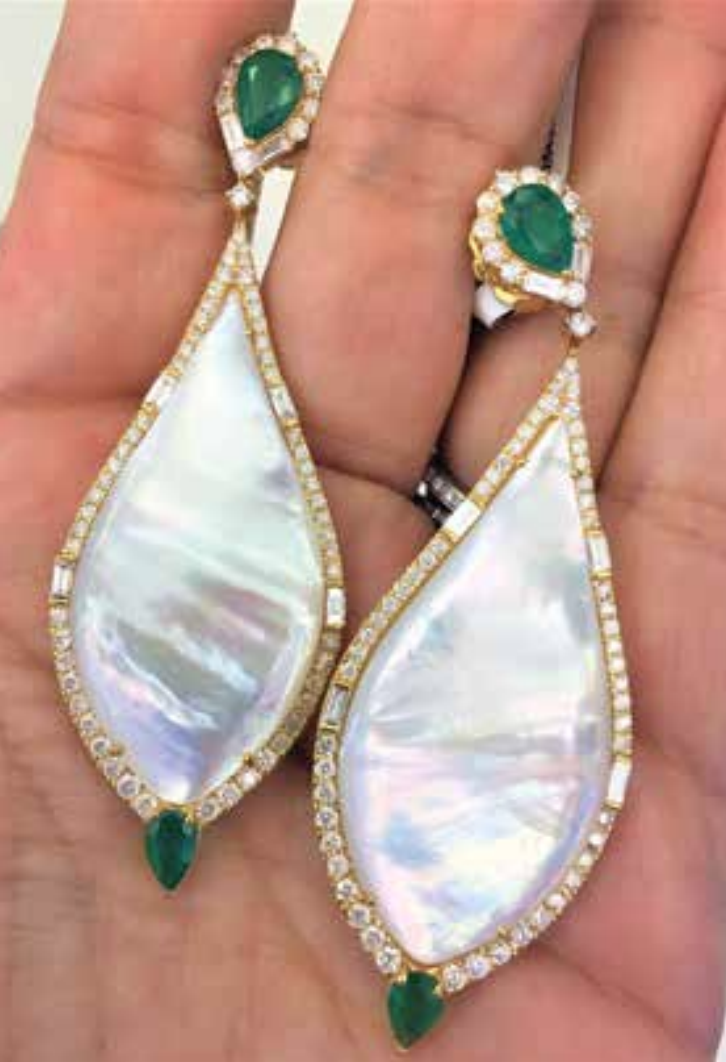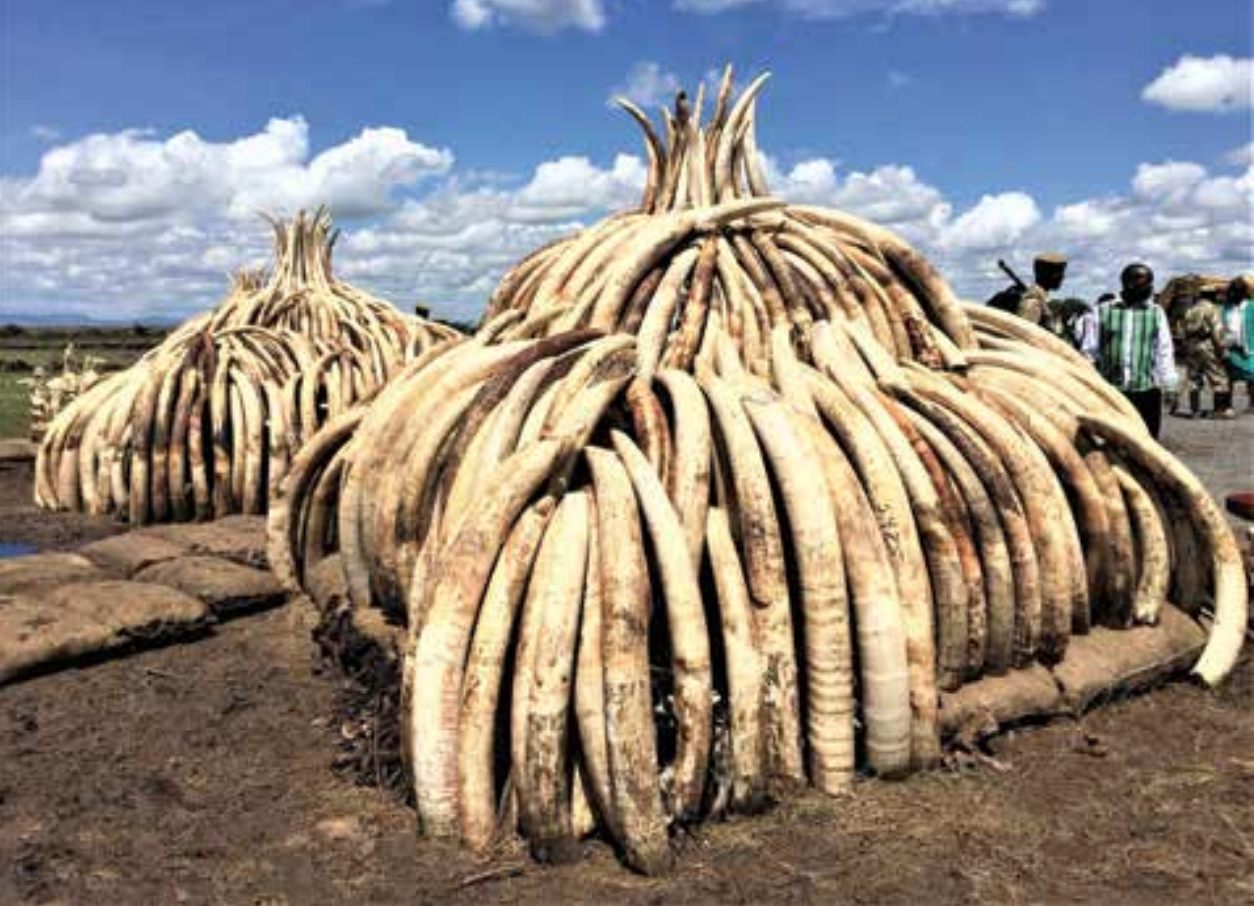Organic “gemstones” are still popular
Organic gemstones have been used for ornaments, decorations and jewellery since prehistoric times. Their use is universal and varies only according to the materials available to different cultures. Many of the organics have historical significance and quite a few find application in jewellery and art forms today.
SHELLS
Shells, often shiny, brilliantly coloured and durable, are among the oldest and most universal of organic gems used decoratively by humans. Their obvious use is evident in their general adornment of garments and in the form of string beads or necklaces and belts. They are a by-product of a good food source; have been used as tools and utensils; have been employed as a currency of exchange; and have often been transformed into toys and musical instruments. Shells are still used for jewellery with pearl shell, abalone and coral being the most popular today. The most renowned is the Mother of Pearl shell which was discovered in almost inexhaustible quantities along the Ninety Mile beach of Western Australia. Around the turn of the last century, Broome, with several hundred luggers operating, was the pearling centre of the world and was rivalled only by the traditional historic Persian Gulf industry. Operations extended from Shark Bay round the north-west coast as far east as Thursday Island, Cape York and the Coral Sea. The pearl shell is the home of an oyster which belongs to a group of molluscs or bi-valves that produce a shell with a pearly or nacreous lining. Should a piece of grit or grain of sand get between the outer shell and the softer inner mantle, the irritation caused is eased by the secreting of nacre which is cemented to the shell. The deposition of this pearly substance around the irritant is arranged in layers of minute aragonite crystals, giving the pearl a concentric-like structure. It is this smooth bulge or blister that is removed and used in jewellery.
Mother of Pearl earrings with some diamonds and emeralds thrown in for good measure
In the hey-day of the industry, all pearls were natural, but by the middle of the last century the effect of the long, intensive operations and the advent of plastics which wiped out the demand for natural pearl buttons, threatened the demise of Broome and the industry. However, instead of natural pearls, a new industry in the form of cultured pearls, gave the town a new lease of life. Rather than letting nature take its course to create one pearl among thousands of oysters, man simulates what happens by performing a surgical operation, during which a nucleus is inserted into the oyster. Natural pearls can take about 10 years to mature while the cultured variety matures in less than a quarter of the time. The popularity of beads for adornment has led to their imitation on a large scale, worldwide. Glass and plastics are the main materials, the beads created being coated with a “pearly essence” in the form of “string dipping”. Among the shells used for ornamental materials are the conch, helmet, mussel, trochus and the abalone of Paua. The hardness of shell, which is a calcium carbonate, is about 2.5 on Mohs scale. It comes in almost every colour, with the shining iridescent variety being of particular interest to lapidaries, as well as the layered coloured shells for cameos. The Paua shell of New Zealand, with its brightly coloured blue and green nacre, continues to be used extensively for a wide range of jewellery items.
An example of the art of scrimshaw on a whale’s tooth
CORAL
Coral, which is really the home of the coral polyp, a minute primitive sea creature, can be aptly expressed as the scaffolding upon the surface of which the boneless animals live as a colony. The chemical composition of coral is a calcium carbonate and it has a hardness of about 3.5 on Mohs scale. The coral polyp is very sensitive to changes in temperature, preferring waters between 13 and 16 degrees Centigrade, which are still and clear. The Mediterranean region, Malay Archipelago, Japanese waters and the Gulf of Mexico in America are the most renowned areas. Most of the processing of the extensive Mediterranean Sea region is an Italian industry, fashioning beads, small carved objects and cameos. With continual changes in the level of the water these coral forms or calcified skeletons continue to build up within the cavities of reefs or atolls. As a result, good-sized pieces with relatively large diameters are obtained. Multi-coloured polished specimens from Tampa, Florida, are highly prized.
IVORY
Another historical and valuable item among the organics is ivory. More than 20,000 years ago, in what is now France, a prehistoric artist carved a piece of ivory from the tusk of a woolly mammoth into the stylized figure of a woman. The tombs of the great Pharaohs of Egypt have revealed beautiful objects and the Bible makes frequent references to this material. Ivory found general use in the fashioning of charms, amulets, tools, weapons and decoration for clothing and personal adornments. The Middle Ages saw the prominence of Chinese artisans who at first produced pieces of domestic or utilitarian significance, but later placed importance on ornamental nature. This craft finally reached supreme elaboration in work which showed two or three distinct layers of carvings cut one behind the other in the thickness of the ivory. In more recent times, the Japanese, using legends and stories, have produced in fine sculpture, scenes from folklore, birds, flowers, animals and children, along with mythological creatures of wild imagination. Much of the ivory used in the prehistoric era came from tusks of the extinct mammoth or mastodon, whose bones or tusks are well preserved in the refrigerated climate of Alaska and Siberia. Today, the ivory trade is the commercial, largely illegal, trade in the ivory tusks of the hippopotamus, walrus, narwhal, mammoth, and most commonly, African and Asian elephants. In this writer’s opinion, ivory as a jewellery item or piece of craftwork belongs to a less enlightened age and its use today for any purpose, should be totally banned. What would you rather see, a bit of jewellery carved from an African elephant tusk, knowing that in order to get the tusk the animal was slaughtered, or a live African elephant? A material often labelled as vegetable ivory is provided by the hard seeds or nuts of certain palm trees which can be used for small carvings, rings, beads and pendants. The best known of these ivory substitutes is the Tagua nut of Columbia, resembling a Brazil nut, the size of an egg with the potential for a brilliant off-white polish. Associated with ivory is the craft of scrimshaw, an art form that developed in the golden age of whaling, when sailors, often away from land for months or even years, spent a part of their leisure time scratching pictures on polished whales’ teeth. A smooth, glassy polish is obtained before a very fine steel pen is used to etch outlines which appear when excess black ink is wiped off, leaving the dark lines standing against the polished white ivory.
The tragedy that is the illegal trade in African elephant tusks continues but governments are finally making the game just as deadly for the poachers
JET
Jet, a beautiful lustrous material of a deep rich black, is a type of inferior coal, best known for its association with the seaport of Whitby in England, where a remarkable craft industry has existed since the Roman occupation. Lapidary and jewellery activities reached their peak in the middle of the 19th century and continue to this day. Traditionally, the material was pre-eminent for certain types of jewellery, particularly those for ecclesiastical purposes and mourning rituals. Beads, pendants and charms have been found in early burial mounds in widely scattered parts of the British Isles. It is thought that in Jurassic times, water-worn fragments of a monkey-puzzle tree drifted into the sea and ultimately became water-bogged and sank. In stagnant seas, the wood was preserved in a compressed form and metamorphosed under the influences of heat and pressure, with considerable distortion of the original wood structure. Most of the jet carved into brooches was derived from debris picked up on the beaches or by tunnelling into the sea cliffs. As a gem for jewellery, it is easily worked with simple tools, has a hardness of 2-3 on Mohs scale and its dense structure produces a lustrous mirror-like polish.
AMBER
Amber, a complex mixture of several resins mainly from the Baltic Sea region, is the result of slow fossilization of the sap of a pine-tree species which bled more than 20 million years ago – probably in the Oligocene Period before the great Ice Age. Amber is transparent to translucent, with a greasy lustre and yellow or brown in colour. It is often clouded, sometimes fluorescent, with a hardness of more than two on Mohs scale, and it takes a potentially high polish which makes it suitable for carving, cabochons, pendants and beads. A characteristic of Baltic amber is the frequent inclusion of leaves, pieces of moss, lichens and pine needles, also flies and other insects within the fossilized resin. The kauri gum or copal resin of New Zealand, in jewellery is indistinguishable from amber, but is more recently formed, not having undergone metamorphosis that renders amber the more resistant of the two. A string of amber beads, now hard to obtain unless money is no object, is a prized item of jewellery. From the ancient world of myths and superstition to the high-tech world of contemporary artists, organic gemstones have been, and still are, a source of inspiration in the decorative arts.
Earrings made from Baltic amber




